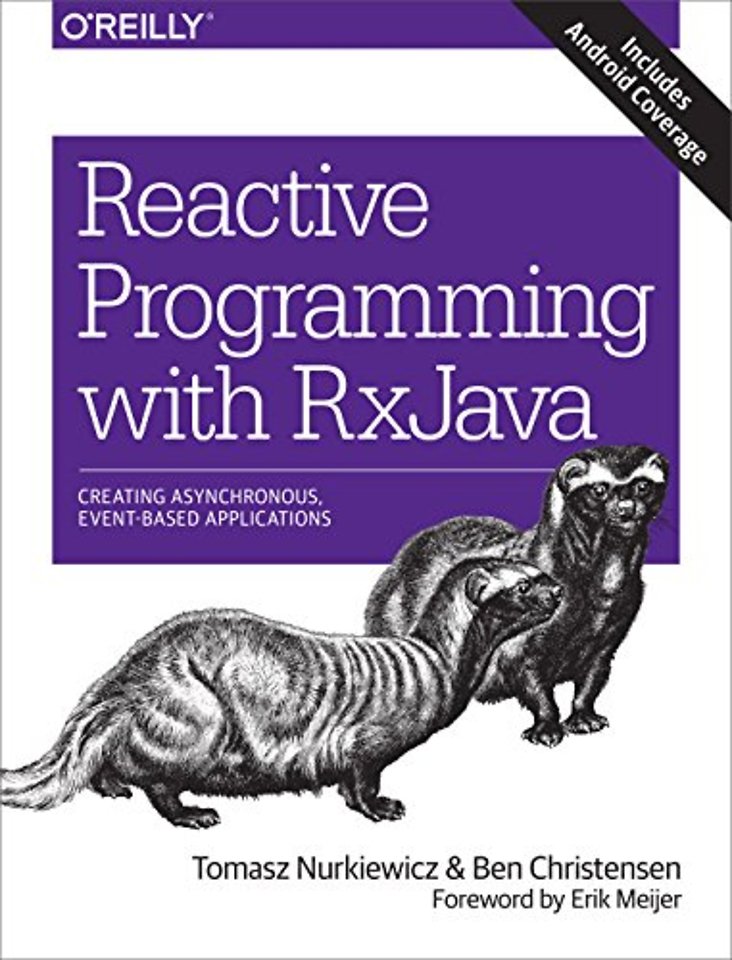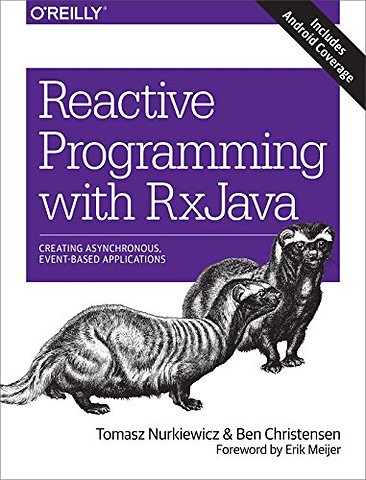Reactive Programming with RxJava
Paperback Engels 2016 1e druk 9781491931653Samenvatting
In today’s app-driven era, when programs are asynchronous and responsiveness is so vital, reactive programming can help you write code that’s more reliable, easier to scale, and better-performing. With this practical book, Java developers will first learn how to view problems in the reactive way, and then build programs that leverage the best features of this exciting new programming paradigm.
Authors Tomasz Nurkiewicz and Ben Christensen include concrete examples that use the RxJava library to solve real-world performance issues on Android devices as well as the server. You’ll learn how RxJava leverages parallelism and concurrency to help you solve today’s problems.
This book also provides a preview of the upcoming 2.0 release.
- Write programs that react to multiple asynchronous sources of input without descending into "callback hell"
- Get to that aha! moment when you understand how to solve problems in the reactive way
- Cope with Observables that produce data too quickly to be consumed
- Explore strategies to debug and to test programs written in the reactive style
- Efficiently exploit parallelism and concurrency in your programs
- Learn about the transition to RxJava version 2
Specificaties
Lezersrecensies
Inhoudsopgave
1. Reactive Programming with RxJava
-Reactive Programming and RxJava
-When You Need Reactive Programming
-How RxJava Works
-Mechanical Sympathy: Blocking versus Nonblocking I/O
-Reactive Abstraction
2. Reactive Extensions
-Anatomy of rx.Observable
-Subscribing to Notifications from Observable
-Controlling Listeners by Using Subscription and Subscriber<T>
-Creating Observables
-Use Case: From Callback API to Observable Stream
-rx.subjects.Subject
-ConnectableObservable
-Summary
3. Operators and Transformations
-Core Operators: Mapping and Filtering
-More Than One Observable
-Advanced Operators: collect(), reduce(), scan(), distinct(), and groupBy()
-Slicing and Dicing Using skip(), takeWhile(), and Others
-Writing Customer Operators
-Summary
4. Applying Reactive Programming to Existing Applications
-From Collections to Observables
-BlockingObservable: Exiting the Reactive World
-Embracing Laziness
-Composing Observables
-Imperative Concurrency
-flatMap() as Asynchronous Chaining Operator
-Replacing Callbacks with Streams
-Polling Periodically for Changes
-Multithreading in RxJava
-Summary
5. Reactive from Top to Bottom
-Beating the C10k Problem
-HTTP Client Code
-Relational Database Access
-CompletableFuture and Streams
-Observable versus Single
-Summary
6. Flow Control and Backpressure
-Flow Control
-Backpressure
-Summary
7. Testing and Troubleshooting
-Error Handling
-Testing and Debugging
-Unit Testing
-Monitoring and Debugging
-Summary
8. Case Studies
-Android Development with RxJava
-Managing Failures with Hystrix
-Querying NoSQL Databases
-Camel Integration
-Java 8 Streams and CompletableFuture
-Memory Consumption and Leaks
-Summary
9. Future Directions
-Reactive Streams
-Observable and Flowable
-Performance
-Migration
-Appendix More HTTP Server Examples
-fork() Procedure in C Language
-Thread per Connection
-Thread Pool of Connections
Appendix A: Decision Tree of Observable Operators
Index
Anderen die dit boek kochten, kochten ook
Rubrieken
- advisering
- algemeen management
- coaching en trainen
- communicatie en media
- economie
- financieel management
- inkoop en logistiek
- internet en social media
- it-management / ict
- juridisch
- leiderschap
- marketing
- mens en maatschappij
- non-profit
- ondernemen
- organisatiekunde
- personal finance
- personeelsmanagement
- persoonlijke effectiviteit
- projectmanagement
- psychologie
- reclame en verkoop
- strategisch management
- verandermanagement
- werk en loopbaan







